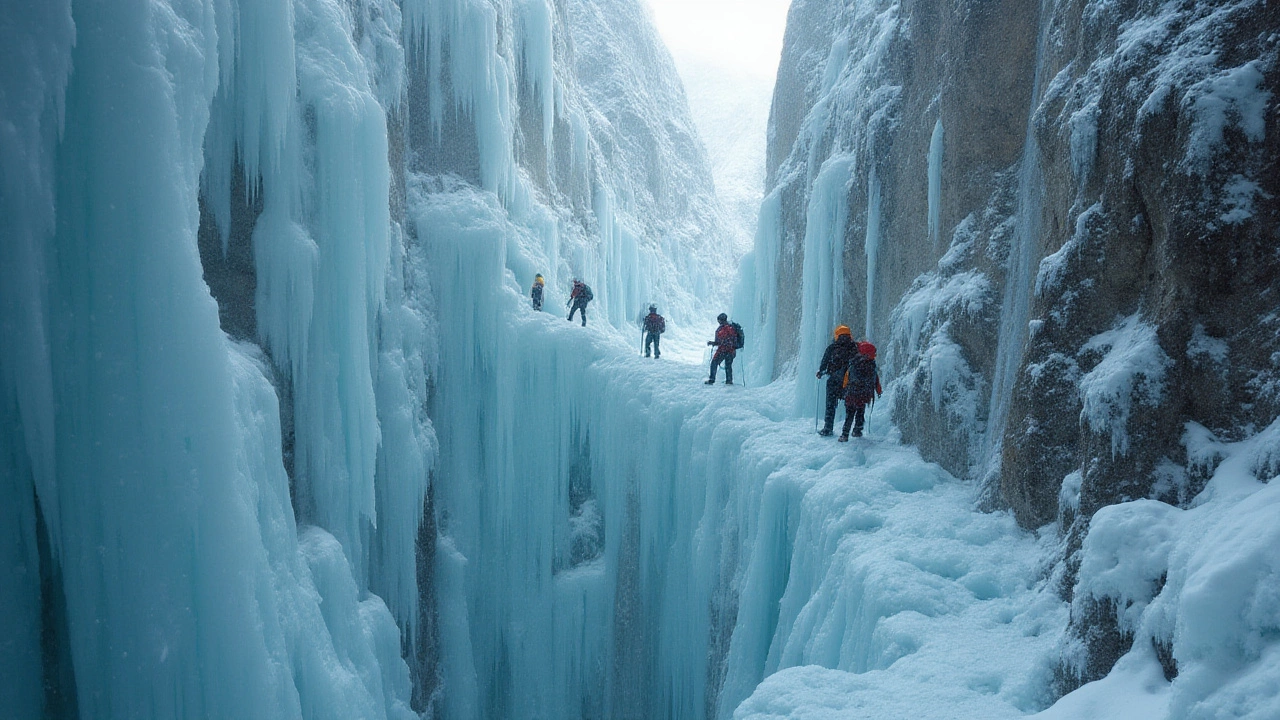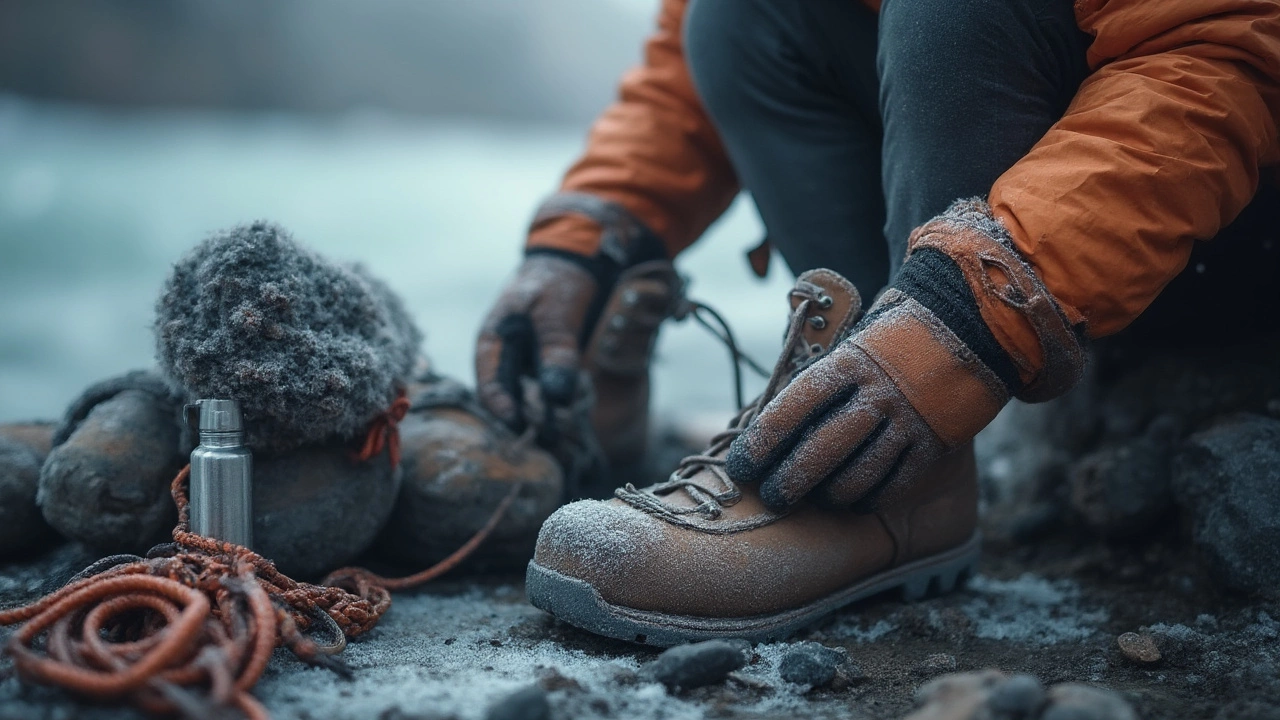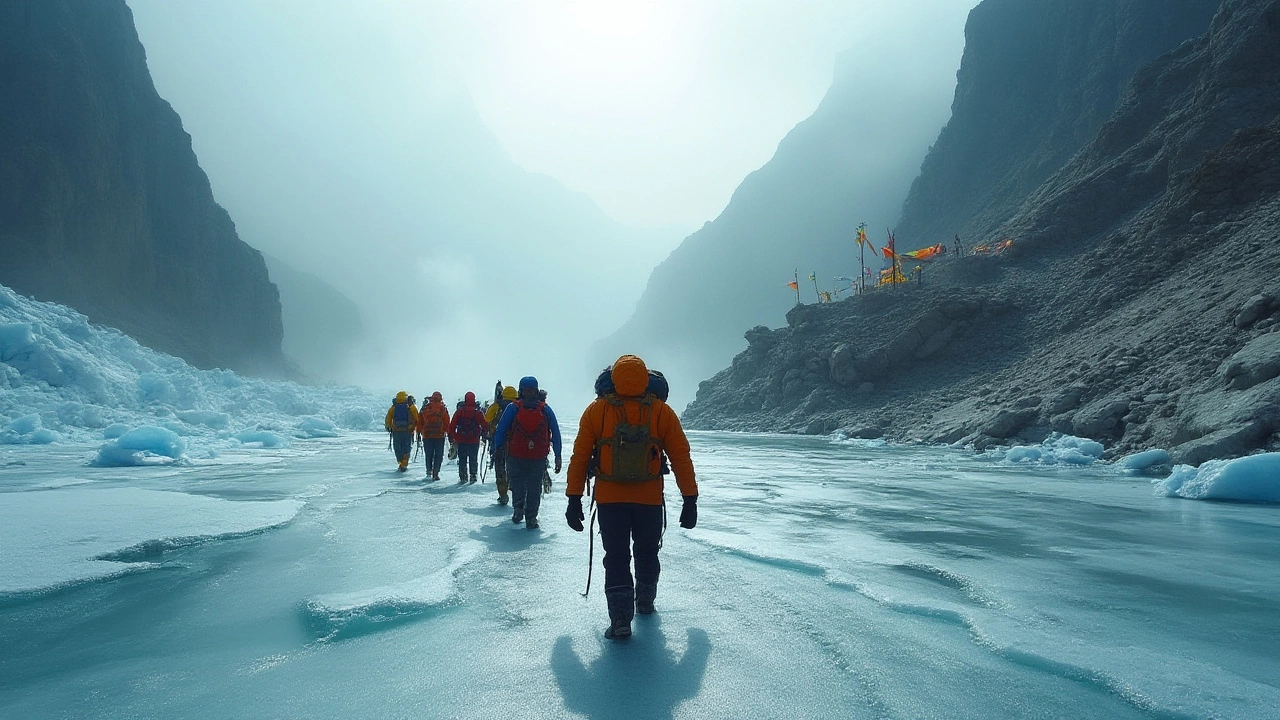If you think of trekking as a series of scenic strolls through meadows, you haven’t met India’s wild side. Here’s a shocker: the scariest trek in India isn’t about steep hills or wild animals. It’s about walking for days, not on solid land, but across the frozen, shifting surface of a river, in temperatures that can freeze spit midair. Revered as the Chadar Trek, this journey through Ladakh’s Zanskar Gorge is less about hiking—more about surviving. Experienced adventurers call it a game of nerves where the only thing between you and disaster is a sheet of ice that could crack with a careless step. If your soul craves true adventure—the kind that makes your heart pound and your toes ache—strap in. Welcome to the frozen world of Chadar, the scariest trek India has to offer.
What Makes the Chadar Trek So Scary?
Imagine walking 105 kilometers over a river that’s actually “alive” underneath. The Chadar Trek, set on the Zanskar River in the coldest depths of the Ladakh winter, pushes every limit. Daytime temperatures hover at negative 20°C, and at night? It plunges past negative 30°C. Your world shrinks to a tunnel of blue ice, where sunlight barely sneaks past the high canyon walls overhead, and the only sounds are the crunch of your boots and the distant groan of shifting, breathing ice. This isn’t just a trek; it’s a battle with elements that don’t care about bragging rights on Instagram.
Why is the Chadar Trek called ‘scary’? It boils down to three things: the brutal cold, the constantly changing ice (Chadar means “sheet” in Hindi, but this sheet is never the same), and remoteness. The sheet cracks, shifts, and even dissolves in places, forcing trekkers to scramble up rocky ledges or wade through freezing water to continue. Rescue helicopters aren’t coming for you out here—if something goes wrong, it’s a 2-day walk to the nearest village. Ignore ‘moderate’ labels on adventure websites. This trek has a reputation for turning confident hikers into anxious, shivering beginners.
In February 2015, sudden warm weather melted sections of the Chadar, stranding dozens of trekkers. Rescue operations took days because land access is next to impossible. The number of people who’ve had to turn back halfway isn’t recorded, but guides will tell you: only those with nerves of steel can finish. Local Zanskaris used to traverse this route for centuries, carrying supplies on their backs, and even they admit that the river’s unpredictability scares them. Inhuman cold, the constant threat of slipping into slushy, bone-numbing water, and the utter isolation are all part of the thrill—and the fear.
Here’s a chilling fact for you. Every year, about 2,500-3,000 trekkers attempt the Chadar Trek, but only a fraction make it all the way to the town of Nerak, often because the ice “breathes” and cracks apart beneath their feet. According to a 2023 trekking report by the Adventure Tour Operators Association of India, roughly 38% of participants fail to complete the route for reasons ranging from altitude sickness to sheer terror. If you want cold, hard data, check this out:
| Year | Attempted | Completed | Turned Back |
|---|---|---|---|
| 2021 | 2050 | 1350 | 700 |
| 2022 | 2870 | 1695 | 1175 |
| 2023 | 3025 | 1875 | 1150 |
There’s no awards ceremony at the end, just the deep, soul-stirring satisfaction of having crossed what’s regularly ranked—not just in India, but worldwide—among the top 5 most dangerous hikes. Looking for haunted forests or mythical creatures? They’re nothing compared to the steady threat of hypothermia, broken ice, and total isolation.
And, if you ask guides like Dolkar Namgyal, who’s led more than 16 Chadar expeditions:
“You can’t ever relax. Every step is uncertain. We check the ice each morning, but what is safe at 7am might crack open by noon. That fear—of the river swallowing your next step—that’s what makes it the scariest trek.”So, if you come, prepare not just your body but your mind.

Myth-Busting: Why the Chadar Trek Stands Alone
It’s tempting to compare treks across India—the Valley of Flowers, Roopkund, Sandakphu. But none come close to the scariest trek India has: Chadar. Here’s why.
Altitude isn’t the killer fear here, unlike treks to Everest Base Camp or Stok Kangri. At Chadar, the altitude is manageable for most (around 11,000 ft). Instead, your enemy is the environment. You’re literally walking on an unstable, frozen highway. Some years, the Zanskar doesn’t freeze all the way, forcing groups to edge around open water or crawl along icy ledges hung over dark, freezing depths. Forget the burning calves of uphill treks: here, ankles, toes, and fingers take a beating from the cold.
Poorly planned trips are where horror stories blossom. Take footwear—normal hiking boots will betray you. Only insulated, waterproof boots with microspikes or Yaktrax can manage. If you see mist—run! That means the river is warming and the ice is melting. Most guides insist on teams roped together so if one falls through, the others can help. And yes, people do fall through sometimes, mostly when ignoring a guide’s directions to "stick to the middle." Hypothermia can set in within seconds after a plunge, even if you scramble out fast. One common myth is that you can "sprint across thin ice." Actually, it’s slow, careful footsteps—not speed—that save you here.
A lot of folks think if you’re fit, you'll be fine. Actually, mental grit matters more. People freeze (pun intended!) when the ice groans or flexes beneath them. Keeping calm is key. Here’s another weird fact: you have to drink more water than you think. At high altitude and in extreme cold, dehydration sneaks up even quicker. One tip: keep water bottles inside your jacket, or risk them turning to solid ice mid-way. It’s the tiny details—packing chemical hand warmers, double-layer socks, avoiding cotton at all costs—that turn fear into fun (well, sort of!).
The Chadar is also notorious for "whiteouts," sudden snowstorms that erase any trail and turn your group into shadowy figures hunched against a wall of swirling snow. Navigation skills from your guide? Non-negotiable. In 2022, a sudden blizzard left 100 trekkers huddled in makeshift shelters overnight—no rescue, just patience, and piles of tea boiled from river water. And it’s not just weather or ice. Yak caravans from local villages still use the Chadar, and you’re often overtaken by grinning Zanskari children in gumboots, humming songs as they dash across the very ice that’s making you sweat buckets inside your parka. If you want a real adventure ego check, that’ll do it.
The trek also carries an element of tradition: for centuries, it was the only winter lifeline between Leh and Zanskar when summer routes closed. Several monasteries rely on supplies carried across this lethal ice corridor. There's a cultural rhythm under the risk. And guess what? The freeze is shrinking every year, thanks to erratic weather patterns linked to climate change. The Chadar window is now tighter than ever—usually only late January through February, and sometimes not even that. In the next decade, it’s possible the trek could vanish, replaced by bridges and tunnels now under construction. Anyone wanting to test courage against nature’s sharpest edge should hurry.
Here’s a quick list of things you’ll only find on Chadar:
- Patchwork ice—no two days of the trek are the same, even if you’ve done it before
- Random encounters with wild blue sheep or ibex, though wildlife is sparse due to the weather
- Crystal ice caves in places where the freeze runs deep
- The soundscape—creaks, gurgles, and sometimes an unsettling silence
- Hot butter tea from Zanskari hosts, offered as a lifeline for the freezing
Other treks may tempt with jungles or steep drops, but none offer the unique terror of hearing the ice shift beneath your feet, of peering into inky water a heartbeat away. That’s what makes the Chadar Trek a class apart: it’s you versus nature’s most unpredictable element.

How to Survive (and Maybe Enjoy) the Chadar Trek
If your heart’s set on tackling the scariest trek in India, don’t leave your preparation to luck or bravado. This is a place where missing an extra pair of socks can ruin your day, and a bad attitude can threaten your life. So here are some hard-won tips from folks who’ve done it and lived to tell the tale.
First, gear up like an astronaut, not a fashionista. Layers beat bulk—start with moisture-wicking chemises, throw on thick fleeces, and finish with a windproof, waterproof shell. On your hands? Two pairs of gloves—a thin inner and a solid outer. Don’t skimp on socks, either. Triple pairs, and always carry dry spares. Hand and foot warmers aren’t a luxury—they’re a lifeline.
Packing list basics:
- Insulated, waterproof boots with grippy outsoles (think Vibram)
- Down sleeping bag rated at minus 20°C or lower
- Headlamp with extra batteries (the sun’s gone by 4:30pm most days!)
- Trekking poles, for stability on uncertain ice patches
- Plenty of high-calorie snacks—think nuts, chocolate, energy bars
- Thermal base layers and insulated jackets—no cotton, it traps moisture
- Sunglasses: ice glare is a fast ticket to snow blindness
- Medications for altitude, as well as basic first aid for blisters and scrapes
Start physical training early. Cardio is good, but practice balance too—try walking on uneven surfaces, it’ll help. Mental prep? Imagine long hours in silence with only your thoughts and the crunch beneath your boots. That’s the reality—all bravado gets swallowed up by isolation in icy canyons.
A real hidden challenge is food. Appetite drops in the cold, so pack comfort food—you’ll need the calories to keep warm. Instant soup, nut butters, and dried fruit work wonders. If you can make yourself drink hot salted butter tea, do it—locals swear it helps beat cold and altitude. Don’t forget to “camel up” (drink lots before trekking) because water is a mission—every drop has to be boiled, and even then, trekking for hours in Arctic cold dries you out shockingly fast.
Campsites on Chadar are both magical and brutal. Tents sit on bare ice or thin gravely spots; sleeping pads keep you from becoming an ice sculpture overnight. Most groups pitch beside natural caves, which cut wind and offer some ancient graffiti to distract you from frozen toes. When nature calls, be prepared for a quick dance in layers—forget privacy, it’s survival mode all the way.
Safety isn’t optional. Only book with experienced, licensed guides—they know where the ice is safe to walk and which spots to avoid. If a sudden warm spell hits, listen to your guide if they say turn back. Trying to outsmart nature rarely ends well here. Group size should be manageable—6 to 10 is best, so you have both support and flexibility. Inform someone responsible about your itinerary before you start—there’s no cell signal, and help is days away.
While this all sounds terrifying—and it really is—the Chadar Trek rewards grit with vistas no camera captures. Still blue shadows, frozen waterfalls hanging mid-leap, the eerie echo of your own heartbeat when the wind dies. The camaraderie in camp at night (“Did you hear that crack?”) forges friendships like nothing else. And if you finish? You earn a spot at the top of India’s hardcore trekking legends.
So, is the Chadar Frozen River Trek really the scariest trek in India? In pure, in-your-bones challenge and real, immediate danger, there’s just nothing else like it. Try it if you dare—but only after you’ve stared down your own worst fears in the mirror first.
